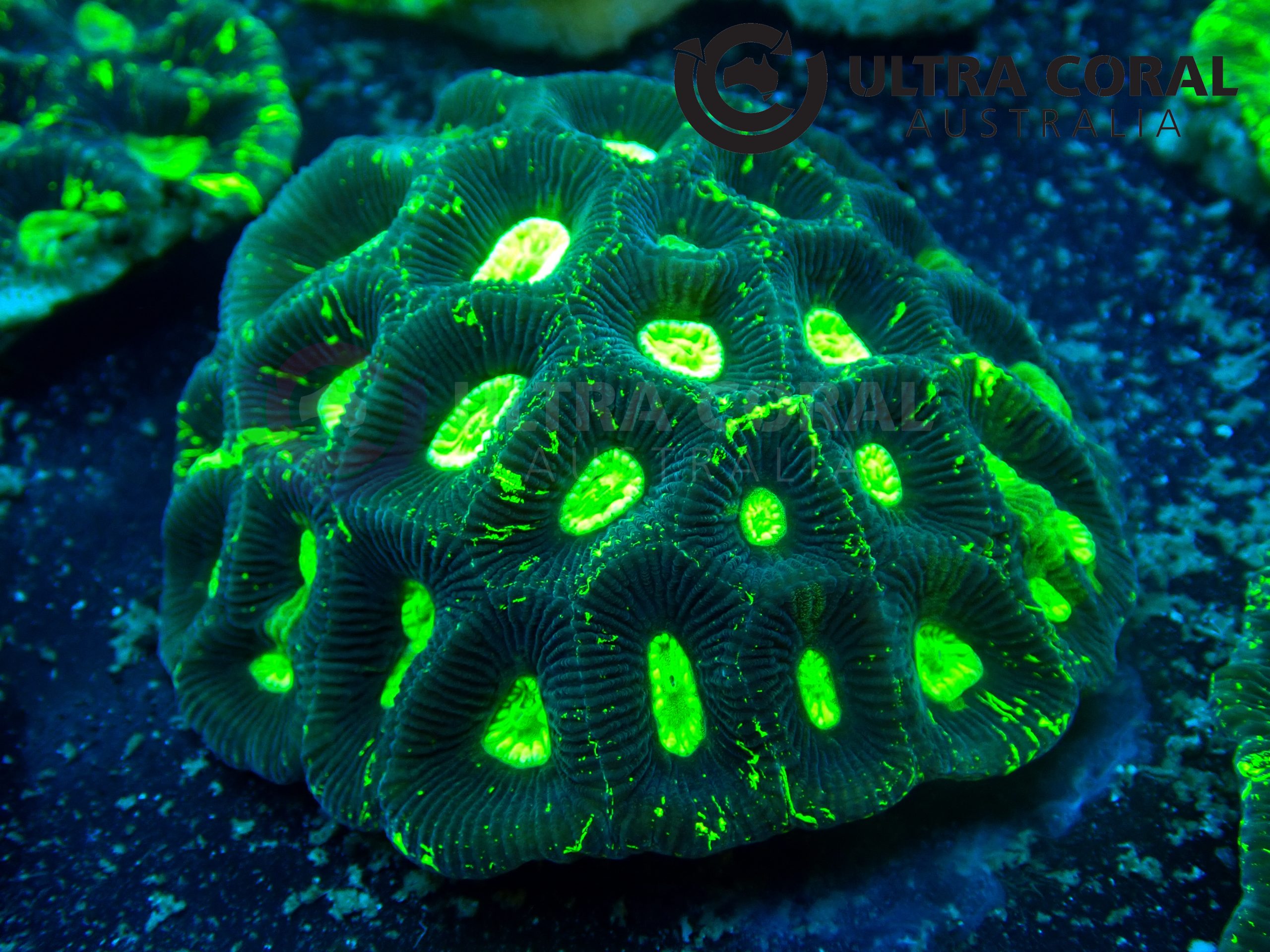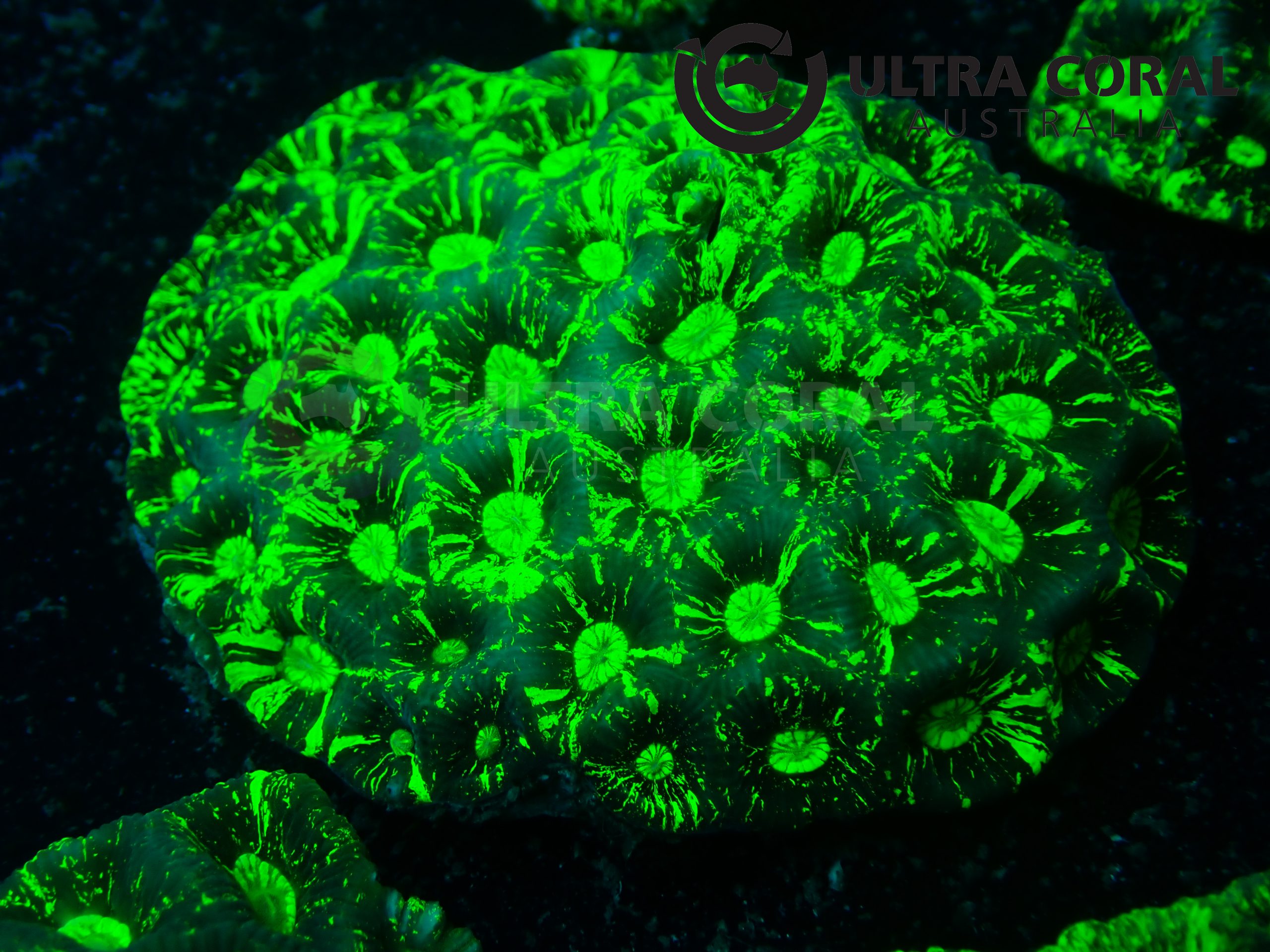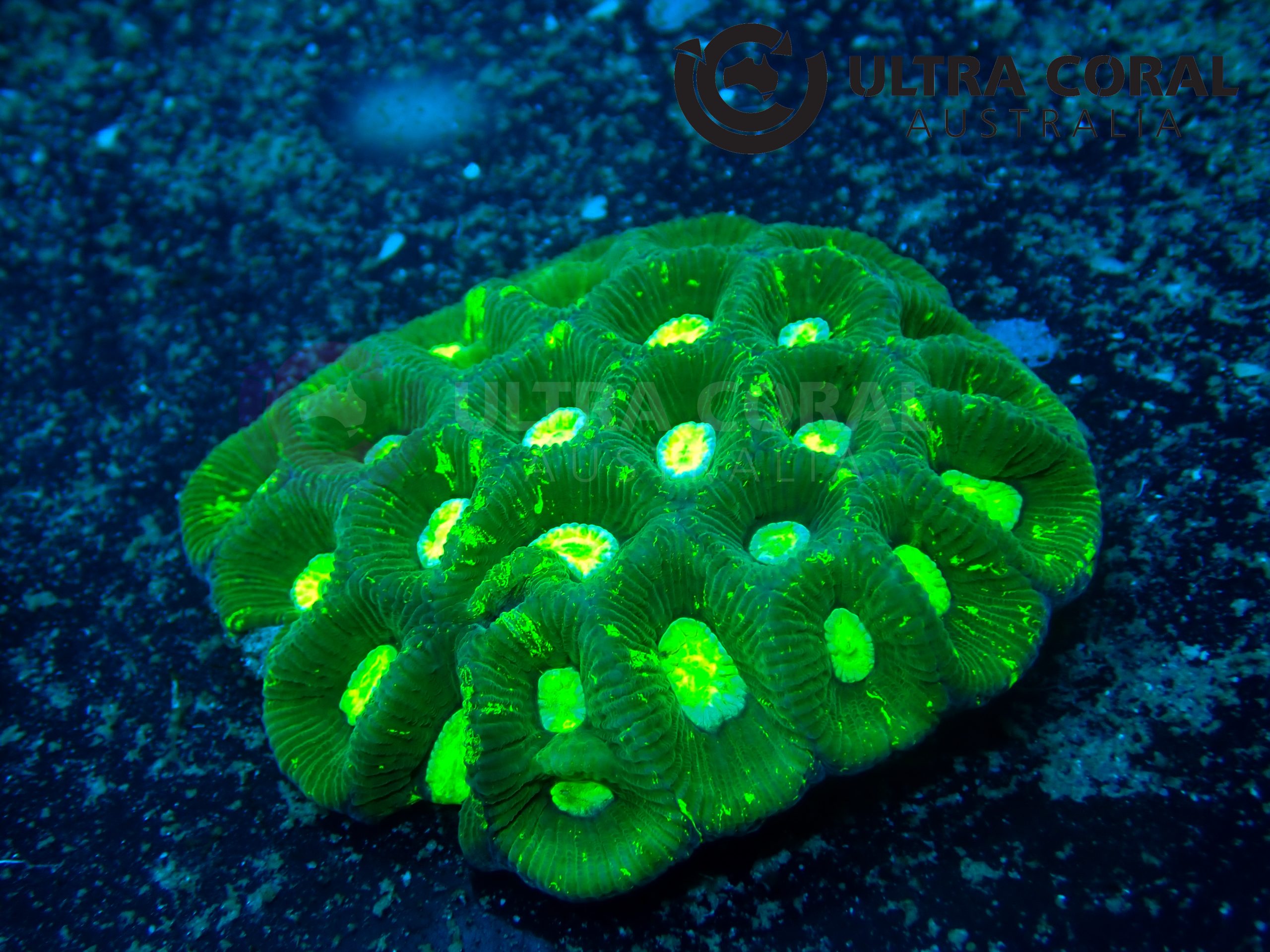Goniastrea sp.

Commonly known as Honeycomb Coral, Star Coral, Wreath Coral, Moon Coral, Pineapple Coral, or Brain Coral, these species belonging to the genus Goniastrea.
Goniastrea forms massive colonies, usually spherical or elongate, with well developed paliform lobes. They may resemble Platygyra or Favia but neat septa and paliform lobes distinguish Goniastrea from these species.
Polyps can be seen only at night and they extend sweeper tentacles at night well beyond the base. It is important to leave space between them and neighbors in the reef aquarium.
Goniastrea is commonly found in intertidal flats of fringing reefs and on rocky shorelines.
They can tolerate several hours of exposure to the sun at low tide and also on muddy conditions and low salinity. Hence, they may be encountered frequently in places where no coral might be expected to live.
Basic Water Parameters
pH
8.0 to 8.3
Salinity
34 - 36ppt
Temperature
24.0 - 26.0 Celsius
Husbandry Requirements
Lighiting
110-175 PAR - 50-100 PAR
Flow
Some turbulence required - Passive circulation
Aggressiveness
Has sweeper tentacles and/or an ability to sting some other corals.
Acclimation Guide
- It is highly recommended to acclimate all corals to a new environment to prevent shocking corals.
- Place the corals in the water from the packing bags and slowly add the water from new environment (Dripping method is recommended).
- Use the water parameter above as a guide.
- When the vessel becomes full , replace the water with the new environment water by a small amount at a time.
- Ensure the water temperature matches with the new environment’s water.
- After the corals have spent adequate time in the acclimation water, gently place the corals to a new environment.
- It is recommended to place new corals under lower light intensity than usually required. Once corals show no signs of stress, it can be moved to higher lighting area gradually.”





